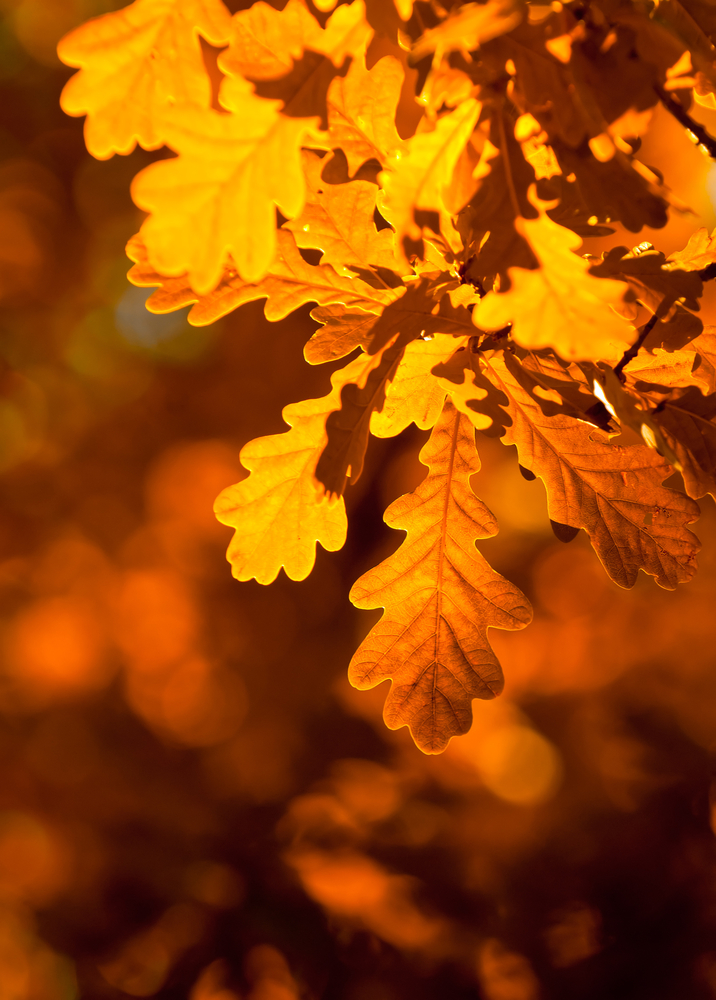English Oak
Latin Name – Quercus robur
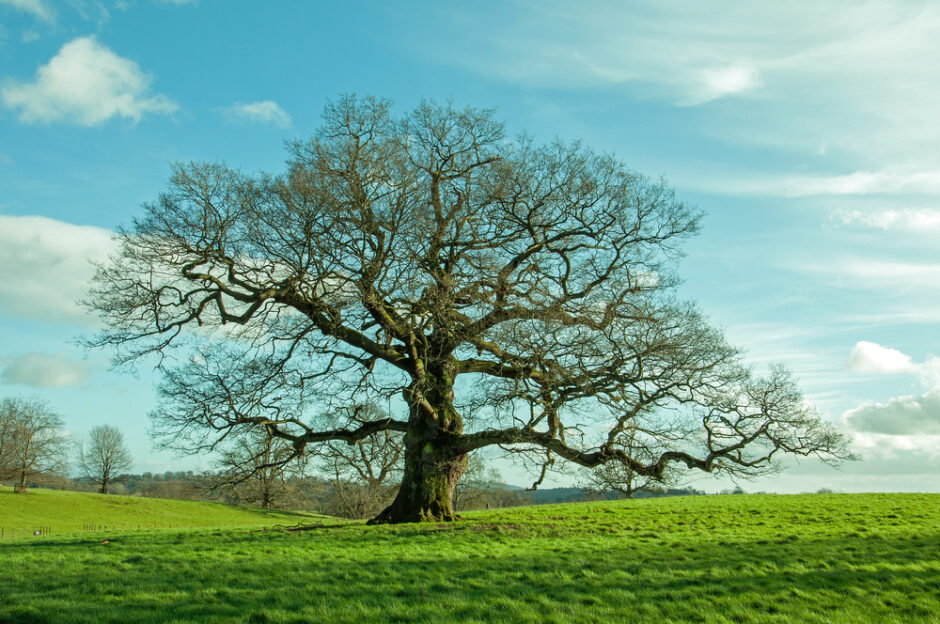
‘English’ or ‘Pedunculate’ Oak – Quercus robur in Winter
These are photos of the same tree through the seasons, starting with the Winter.
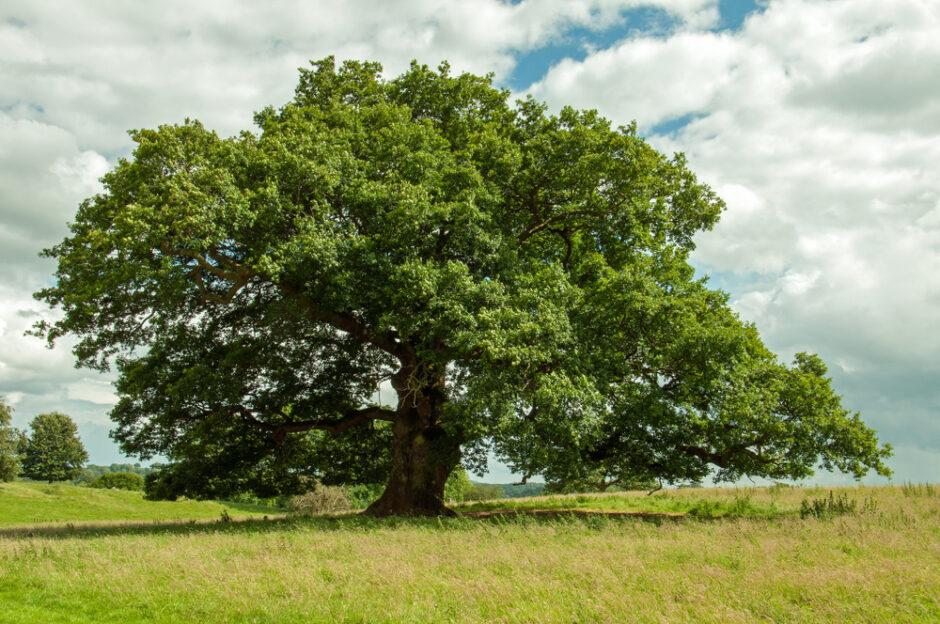
In Summer
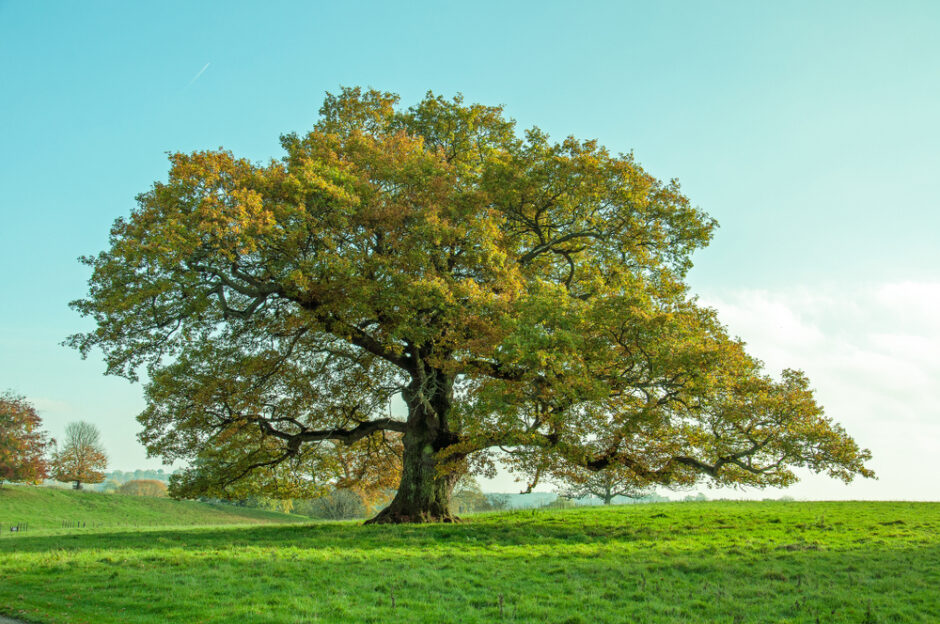
In Autumn
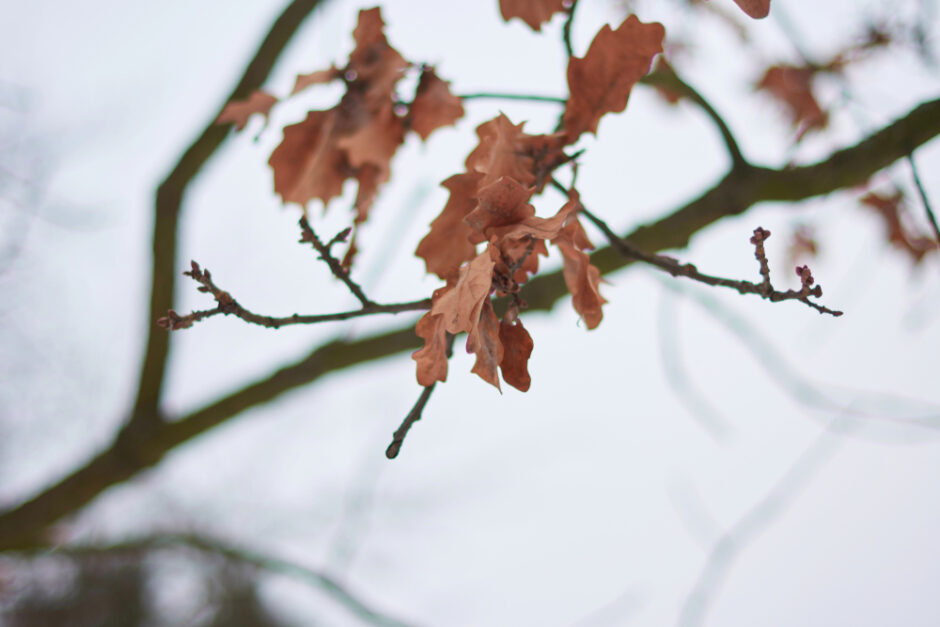
Winter Twig
Looking more closely, this image shows some detail of the buds, but it also shows the dead leaf, still holding tight to the twig. This is a characteristic which occurs in the new seasons more vigorous growth of some woody perennials.
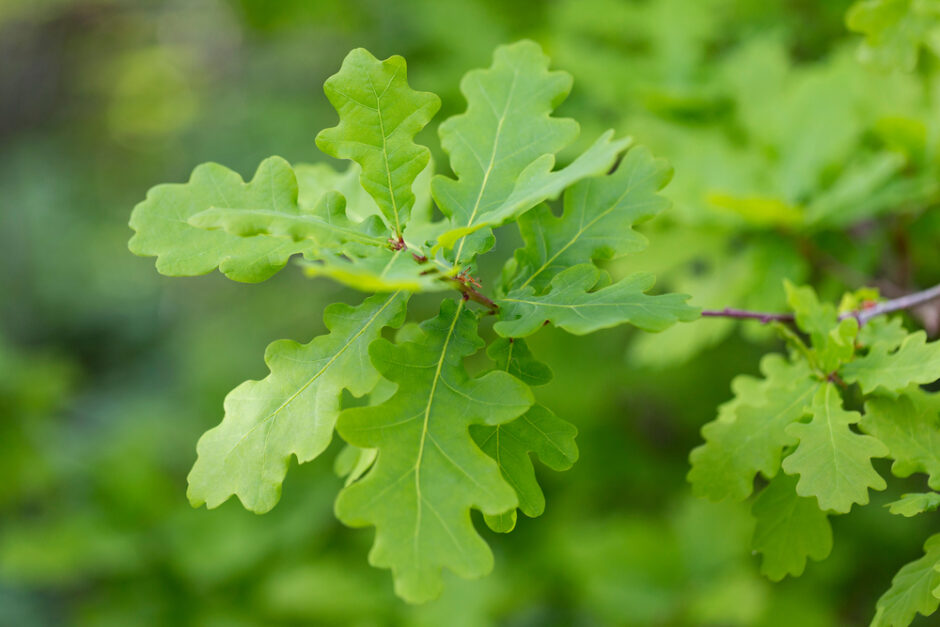
English Oak Leaf
A key identifying characteristic is that the leaf has a very short leaf stalk, and the acorn stalk is long. If you find it to be the other way around, but with a similarly shaped leaf, then it is Quercus petraea, the ‘Sessile Oak’ which is our other native species which often replaces Quercus robur in damper sites or soils.
….
Interestingly, Oak flushes with new leaves and growth twice during the early part of the season, creating a 2-tone appearance which also helps to counter the foraging of over 1000 different types of insect that rely on the Oak leaf.
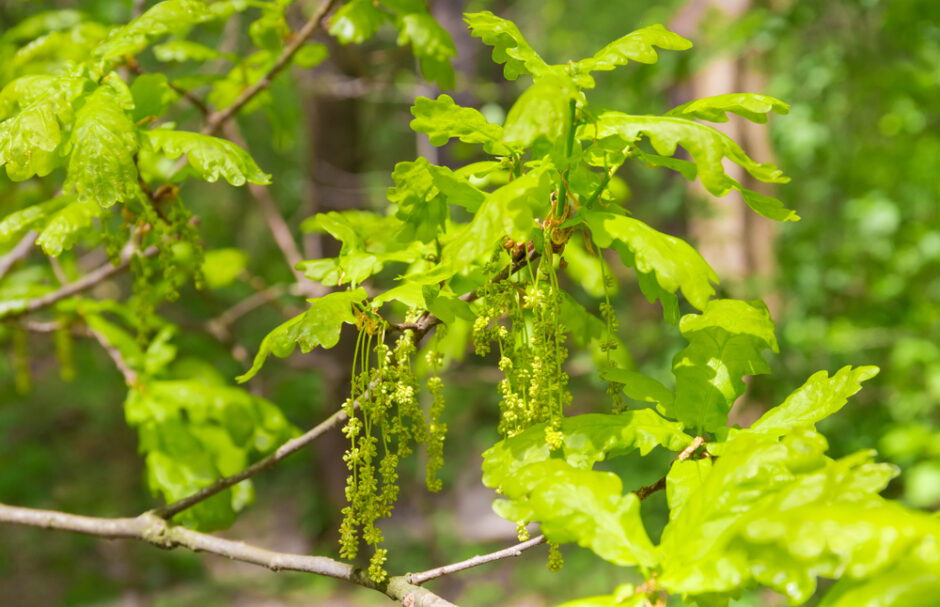
Oak Catkins
Many people don’t necessarily think of Oak trees as being a species that have Catkins. We are all very used to seeing hundreds of them on Hazels for instance.
….
They hide themselves pretty well, so maybe that’s why.
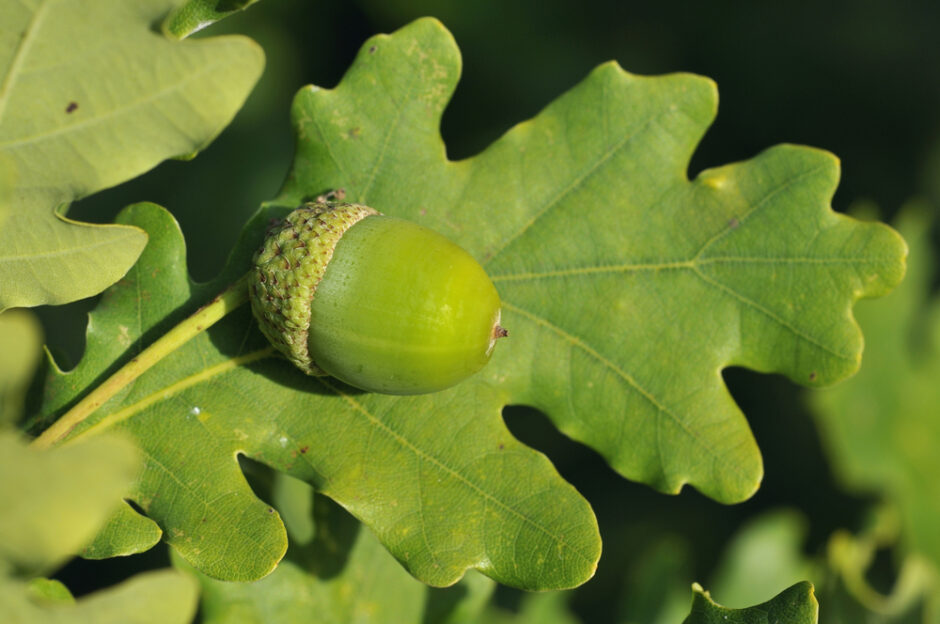
Acorn Forming
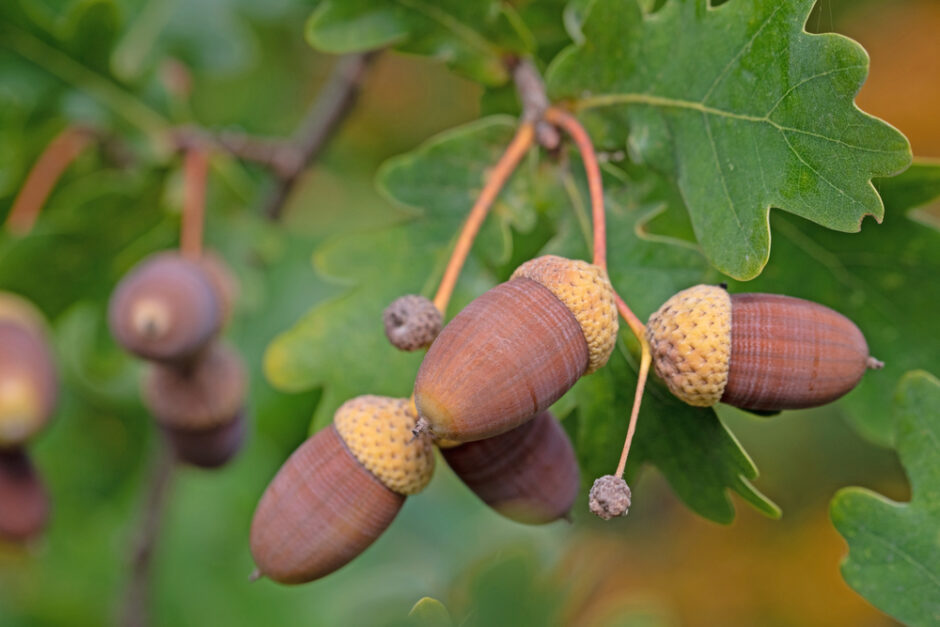
Once the Acorns have been produced and shed, then the reproductive cycle is over for another year.
…. Autumn then beckons, and the leaves fade to yellows and bronzes and then fall.
